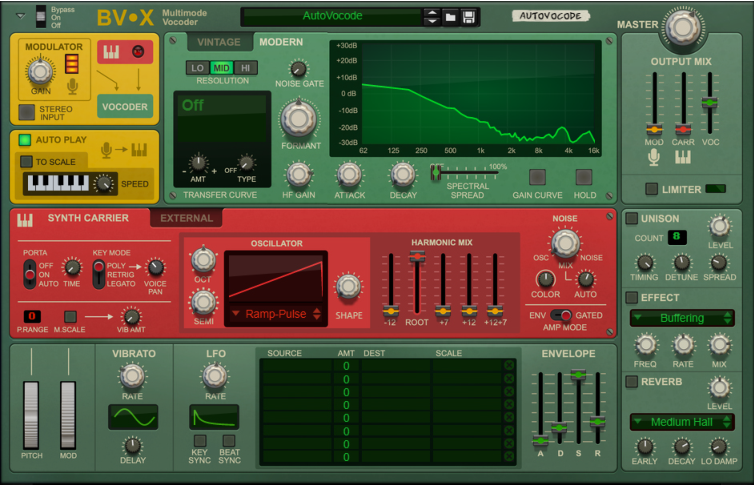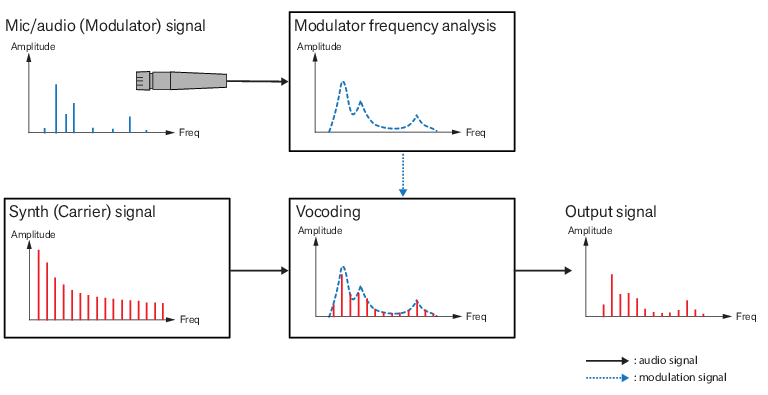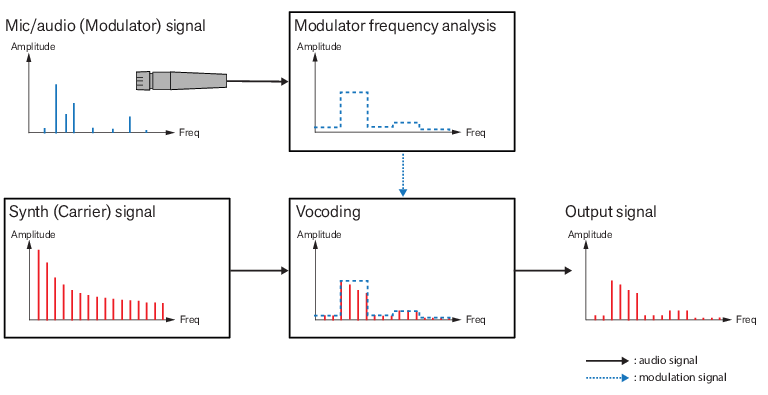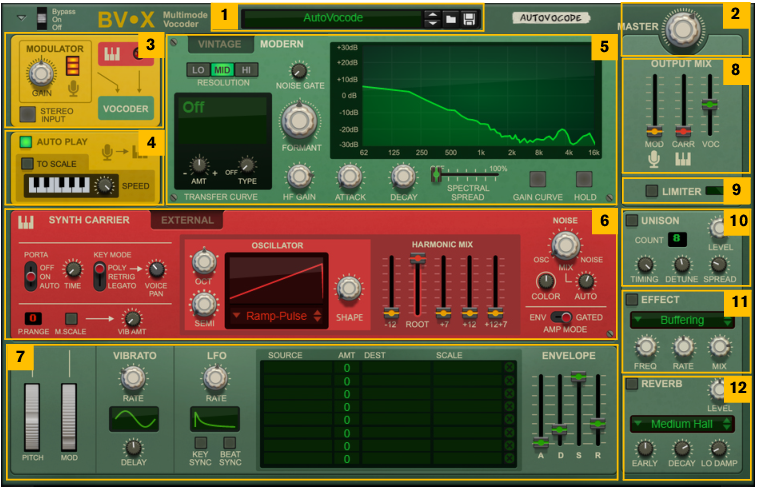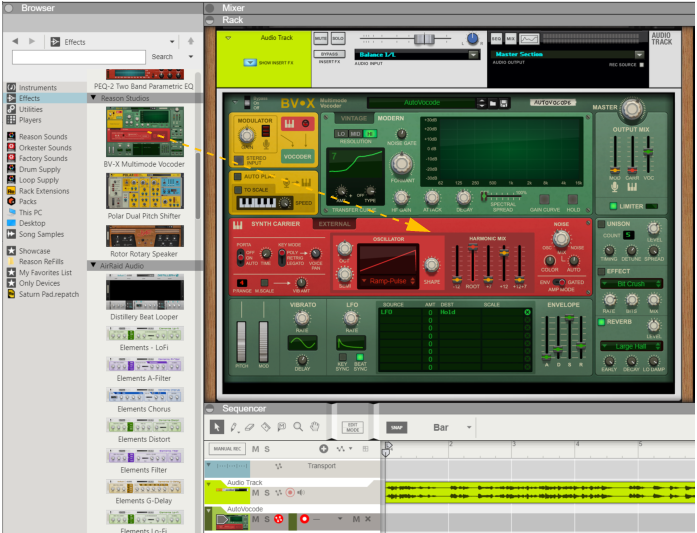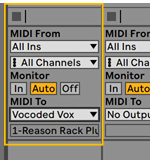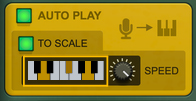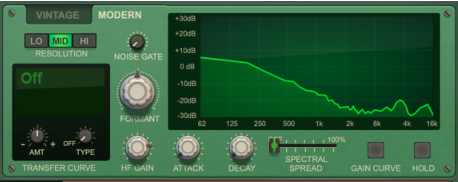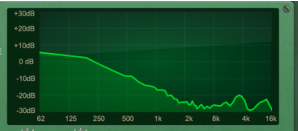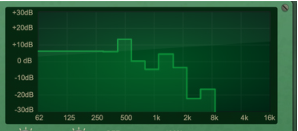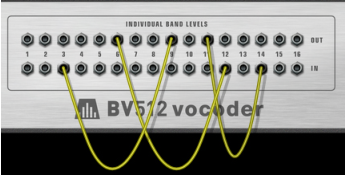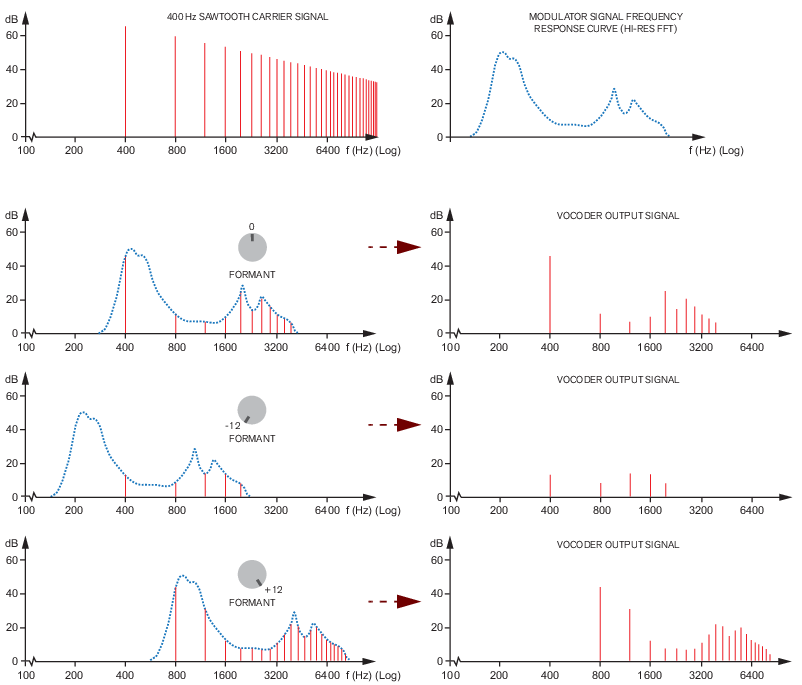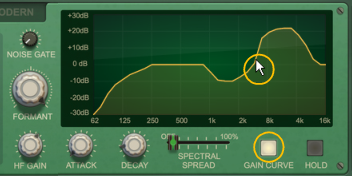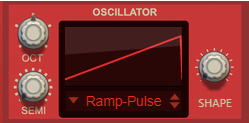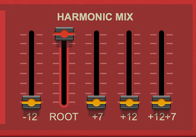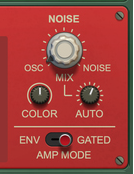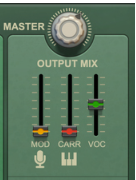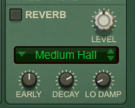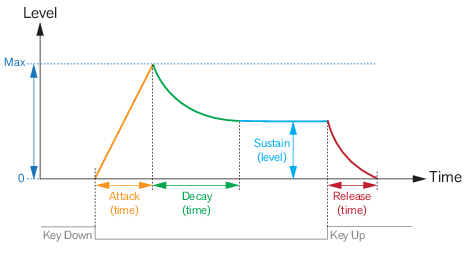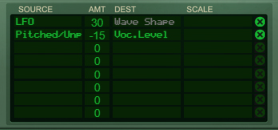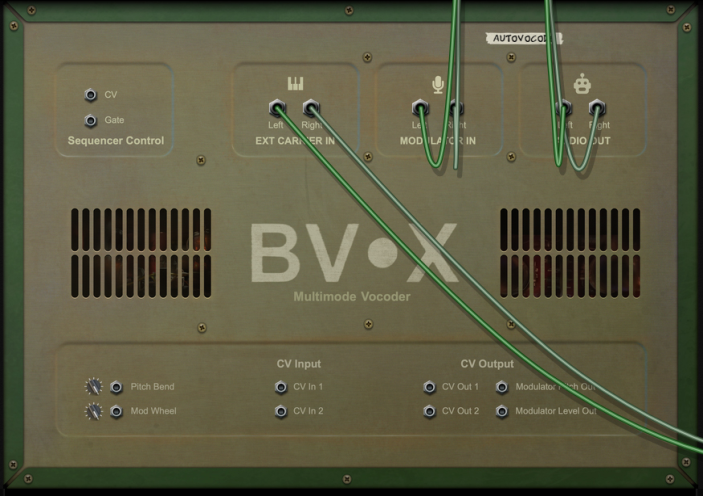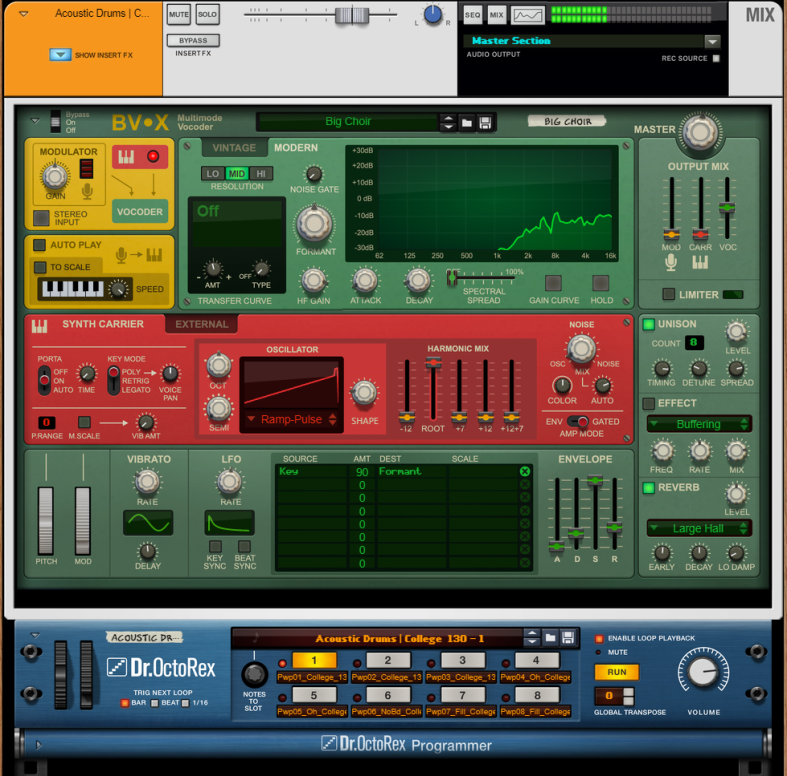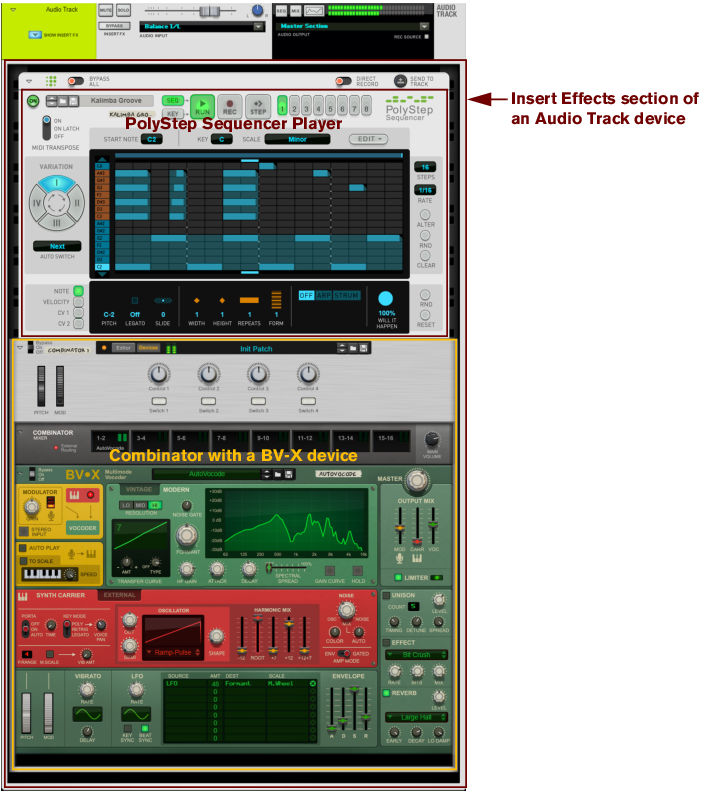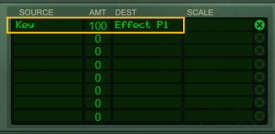|
•
|
Here is where you control the Modulator audio signal (patched to the Modulator Inputs on the rear panel, (see “Modulator In”), i.e. the signal used for modulating the vocoder.
#Gain
This will mainly be audible if there is distinct stereo panning in the modulator signal. Also, settings like Spectral Spread (see “Spectral Spread”), Voice Pan (see “Voice Pan”) and Unison (see “Unison section”) can create stereo effects which might mask the original stereo information. In those cases it's better to turn Stereo Input off to conserve processing power.
|
•
|
|
•
|
In Vintage mode the display shows the frequency bands in a rectangular fashion, where the number of bands is defined with by the Filter Band knob (see “Filter Bands (Vintage)”):
|
•
|
|
•
|
|
•
|
|
•
|
If you use the built-in Synth Carrier (see “The Synth Carrier section”) in Modern mode the Formant setting affects each voice independently.
|
|
|
Note that the HF Gain control (see “HF Gain”) remains active even though the Gain Curve function is on.
|
#Hold
The Synth Carrier/External section lets you choose if you want to use the built-in synth - or use an external carrier signal patched to the rear panel of BV-X. We will begin by describing the built-in Synth Carrier section. The External section is described in “The External Carrier section” further down in this manual.
|
•
|
|
•
|
|
•
|
|
|
Set the desired Pitch Bend range for the “Pitch” wheel with the up/down buttons, or by click-holding on the display and dragging up/down.
|
|
|
#Oct
#Semi
A ramp (sawtooth) wave at Shape=0%, gradually transformed towards a narrow pulse wave at Shape=100%.
|
•
|
|
•
|
A ramp (sawtooth) wave at Shape=0%, gradually transformed towards a triangle wave at Shape=100%.
|
•
|
|
|
See “Envelope” for more info about the Envelope.
|
3.
|
|
|
|
|
#Comb
#Dist
The Pitch bend wheel can be used for bending note pitches of the Synth Carrier up and down. BV-X also responds to Pitch Bend MIDI data from a connected MIDI master keyboard. You set the desired pitch bend range with the “P.Range” control in the Synth Carrier section. The Pitch bend wheel can also be used as a Source in the Modulation Matrix, for controlling almost any parameter in BV-X, see “The Modulation Matrix” below.
The Mod wheel can be used for controlling the Vibrato amount in the Synth Carrier section, see “Mod Wheel Scale and Vibrato Amount”. The Mod Wheel can also be used as a Source in the Modulation Matrix, for controlling almost any parameter in BV-X, see “The Modulation Matrix” below.
The Vibrato works individually per voice and can be used for modulating the internal Synth Carrier oscillator pitch. It can also be used as a Source in the Modulation Matrix, for controlling almost any parameter in BV-X, see “The Modulation Matrix” below.
#LFO
The LFO is global for all voices and can be used as a Source in the Modulation Matrix, for controlling almost any parameter in BV-X, see “The Modulation Matrix” below.
The Envelope can be used for modulating the Synth Carrier’s amplifier - if the Amp Mode is set to “Env”, see “Amp Mode”. It can also be used as a Source in the Modulation Matrix, for controlling almost any parameter in BV-X, see “The Modulation Matrix” below.
|
•
|
|
•
|
|
2.
|
The available Scale parameters are the same as the Source parameters, see “Modulation Matrix Source parameters”.
|
|
Here is where you connect the outputs of an external synth/instrument device if you want to use an external carrier signal instead of the built-in Synth Carrier, see “The External Carrier section”.
These control voltage (CV) inputs can be used for modulation source signal modulation via the Modulation Matrix (see “The Modulation Matrix”). There are also CV inputs with attenuation knobs for modulating the Pitch Bend and Mod Wheel parameters.
|
|
If you are using the BV-X in Auto Play mode (see “Auto Play”), replace the "Key" Source with "Pitch Detect" in the Modulation Matrix. This way the Modulator pitch will control the frequency of the Ring Modulator or Buffering effect.
|
